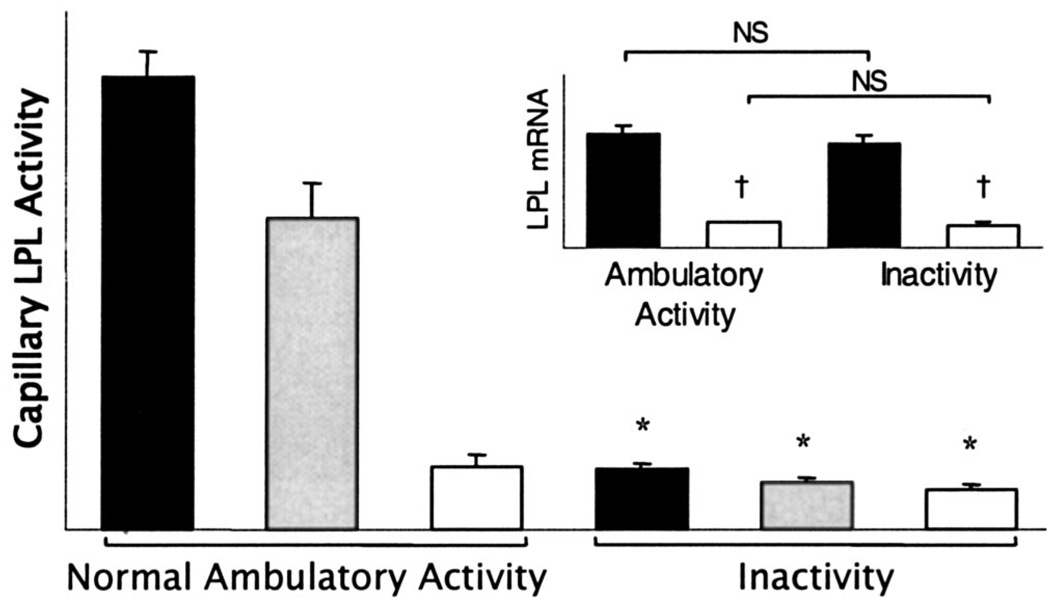Figure 2.
LPL activity and mRNA (inset) in different muscle fiber types after reduced physical activity compared with normal control ambulatory activity. LPL activity was determined in a rat slow-twitch red soleus muscle known to be most extensively recruited during low to moderate ambulatory activity (■; N = 35), fast-twitch red quadriceps ( ; N = 7), and fast-twitch white quadriceps muscle sections least recruited (□; N = 6) during ambulatory activity (2). *P < 0.05 indicates significant difference between reduced activity and ambulatory activity. †P < 0.05 indicates significantly lower LPL mRNA in fast-twitch white muscle than in red oxidative soleus muscle. NS, no significant difference in LPL mRNA between inactivity and ambulatory activity measured by Northern blotting (2) and by real-time polymerase chain reaction (3).
; N = 7), and fast-twitch white quadriceps muscle sections least recruited (□; N = 6) during ambulatory activity (2). *P < 0.05 indicates significant difference between reduced activity and ambulatory activity. †P < 0.05 indicates significantly lower LPL mRNA in fast-twitch white muscle than in red oxidative soleus muscle. NS, no significant difference in LPL mRNA between inactivity and ambulatory activity measured by Northern blotting (2) and by real-time polymerase chain reaction (3).

